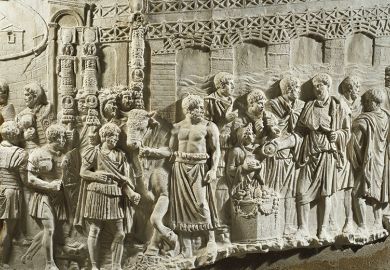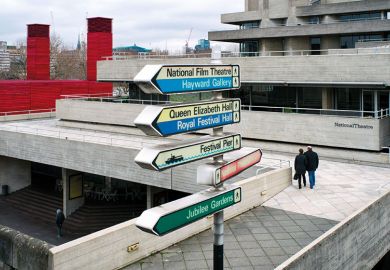Michelagnolo di Lodovico Buonarroti Simoni (1475-1564), aka Michelangelo, uomo universale, was master of terribilità, meaning awe-inspiring grandeur. This places much of his architectural work in the Mannerist category, for he employed elements from Classical exemplars in fanciful, disturbing ways (eg, the ricetto of the Biblioteca Laurenziana, Florence (1524-62)). The times in which he lived were those of profound social, religious and scientific turmoil, in which the Church’s authority was challenged, Rome was sacked in 1527 and Copernicus’ recognition of the heliocentric planetary system heralded a completely novel view of the world.
Political upheavals in Florence led Michelangelo to move permanently to Rome in 1534. William E. Wallace (whose credentials as a scholar of the artist’s career are beyond question), in this volume, deals with the last 20-odd years during which Michelangelo served several popes, Paul III (r. 1534-49), Julius III (r. 1550-55), Marcellus II (r. 1555), Paul IV (r. 1555-59) and Pius IV (r. 1559-65), all the time having to ensure he was not in bad odour with the Medici in Florence, where the Buonarrotis had property and could have lost the lot.
Paul III appointed Michelangelo to supervise the construction of the new St Peter’s after the death of Antonio da Sangallo the Younger, whose aesthetically unsatisfactory, fussy designs wrecked the clarity of Donato Bramante’s centrally planned Greek-Cross proposals. The destruction of the Constantinian basilica was badly handled, and the entire site was in a terrible mess when Michelangelo took over, in the teeth of objections from Vatican officials and supporters of Sangallo’s scheme. Some of Heemskerck’s drawings (reproduced in this book) show the new work towering like Antique Roman ruins over the wrecked remnants of the old church. Michelangelo found the piers would not be strong enough to carry the proposed drum and cupola, so had a huge task on his hands to bring Order to Chaos, both architecturally and in terms of site management. He also had to take over many other of Sangallo’s projects, including completion of the Palazzo Farnese with the massive cornicione over the astylar facade and strange Mannerist touches to the window openings in the cortile. Later, at St Peter’s, Maderno’s addition of a nave and the rather weak front facing the piazza further muddied the architectural waters.
This is the second book on someone described as “God’s architect” I have reviewed, the other being about A. W. N. Pugin, but Michelangelo, whose titular claim is perhaps stronger, has a vast literature, starting with Giovio’s short account (1527), continuing with Vasari’s adulatory Vite (1550), then the consolidation of uncritical mythology by Condivi, who painted the man as an untutored force of nature, owing nothing to anybody. Nineteenth-century romantic biographies added to the fog, and Ruskin’s predictably hostile attacks (1872) did not help. Subsequently, however, the trend has been towards continuations of the scholarly literature devoted to the discovery and editing of sources, and the strength of Wallace’s work has been to place Michelangelo firmly within his milieu, not as some isolated genius living alone in squalor, but as a human being with strong feelings about friendships and family (notably how to protect them in dangerous times). He brings the man alive. His distorted, murky photographs, however, should never have been published, and do not enhance the book.
James Stevens Curl’s Making Dystopia: The Strange Rise and Survival of Architectural Barbarism was published by Oxford University Press (2018). Earlier this year, he received an Arthur Ross Award for Excellence in the Classical Tradition for History & Writing from the Institute of Classical Architecture & Art in the US.
Michelangelo, God’s Architect: The Story of His Final Years and Greatest Masterpiece
By William E. Wallace
Princeton University Press, 296pp, £25.00
ISBN 9780691195490
Published 30 November 2019
Register to continue
Why register?
- Registration is free and only takes a moment
- Once registered, you can read 3 articles a month
- Sign up for our newsletter
Subscribe
Or subscribe for unlimited access to:
- Unlimited access to news, views, insights & reviews
- Digital editions
- Digital access to THE’s university and college rankings analysis
Already registered or a current subscriber?








